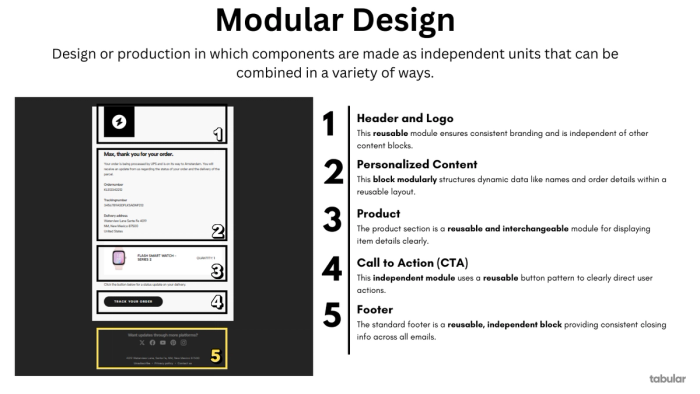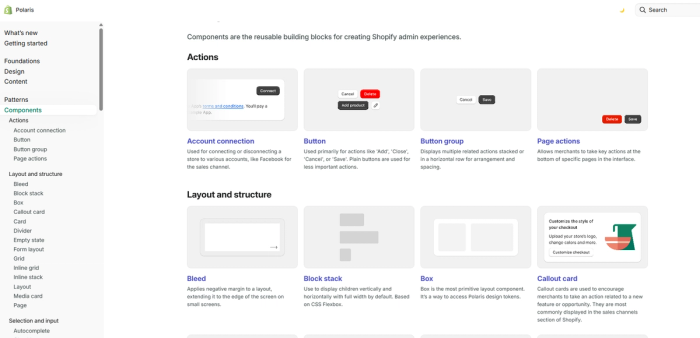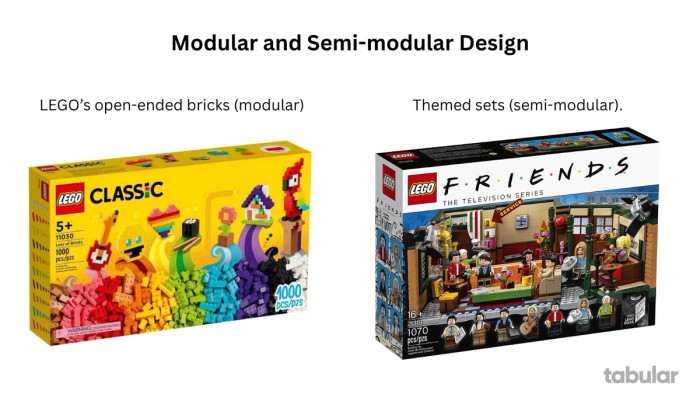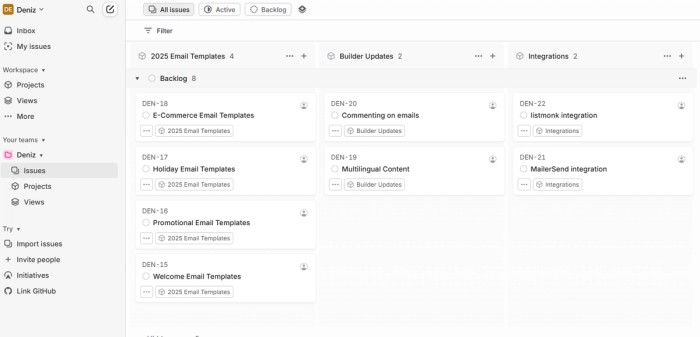What is Modular Design and How It Works with Examples
Recently I bought a Lego set for Hamilton's F1 car, but I didn't enjoy the process as much as I did in my childhood years. Maybe I've grown out, but I used to love the endless possibilities that Lego bricks allow me to shape my dreams in some kind of structure.
Modular design at its core is all about interchangeable components, enabling creativity and adaptability. Each Lego brick is a standardized module that connects with others to shape unique and personal structures.

But Lego is not the only thing that modular design is good for. Modular design really shines in digital products. Let's take WordPress in hand. It powers 43.5% of all websites and dominates the CMS market with its modularized website building experience, allowing users to personalize their experience and create unique digital products by combining different modules.
Let's learn more about what this modular design is, what are its principles, and analyze the well-known modular design examples with their advantages and disadvantages.
What is modular design?
The definition of modular design in Webster's dictionary is: "constructed with standardized units for flexibility and variety in use."
Modular design is a system-structuring philosophy where a product, system, or process is broken down into independent, interchangeable components (modules).
In modular design, modules can be combined in different ways to create variations, replaced, upgraded to serve distinct purposes, or reused for scalability.
Different modules follow different rules, and each module functions independently, while they can be connected with defined interfaces.
In product design, modules can be physical components that fit together like Lego or some Ikea designs; in software, it can be independent code blocks that interact with APIs; or in education, it can be the courses split into learning units.
Modular design offers freedom, scalability, and easier maintenance for users by putting human preference and flexibility over rigidity.
Understanding modular design principles and applications
Like we said, modular design is a system-structuring philosophy where a process is broken down into independent, interchangeable components called modules.
Since these modules have to have the capacity to be combined in different ways to create variations, replaced without threatening the integrity of the system, and reused in multiple applications, key principles can be listed as:
- Standardization: Modules follow consistent rules.
- Encapsulation: Each module functions independently.
- Interoperability: Modules connect seamlessly via defined interfaces.
While these are key principles that should be followed in almost any product design, website design, architecture, or any other application that embraces modular design, it can be expanded:
1. Standardized Interfaces and Boundaries
Modules must connect with defined and standardized interfaces for interoperability. Boundaries clarify where one module ends and another begins for independent development and replacement.
Standardized HTTP endpoints (GET/POST/PUT/DELETE) allow third-party apps to integrate modular services (tweets, payments) without understanding internal code.
2. Nested Modularity
Modular systems are hierarchical, with smaller modules combining into larger ones. This "modules within modules" structure scales complexity efficiently.

3. Independence
Modules should be assigned to specific functions. This minimizes dependencies on other components, while reducing system-wide failures and simplifying updates.
Manufacturing modular platforms enable mass customization (e.g., car chassis reused for multiple models).
4. Flexibility and Customization
Modularity allows customized solutions by recombining modules. This is critical in mass personalization (MP), where products adapt to individual needs.
With Tabular, teams ca clone/reuse blocks across projects which enables them to run the process smoothly and preserve the brand consistency in design, even for new hires.
5. Interoperability and Evolutionary Adaptation
Interfaces must evolve to maintain compatibility while allowing innovation (e.g., USB standards improving speed without sacrificing backward compatibility).
6. Modular Product Architecture
Products should adopt modular (vs. integral) architectures to manage variety and complexity. Modular architectures group functions into interchangeable units, while integral architectures optimize performance at the cost of flexibility.

7. Sustainability and Lifecycle Management
Modular systems support sustainability by enabling repairs, upgrades, and recycling.

Modular Design Examples in SaaS
1. Linear
Linear is basically a representation of modular product design. The SaaS platform is designed to provide a solution in project management for software teams. Linear is known for breaking down workflows into independent yet interconnected components like projects, issues, and teams.

For example, a team can nest a design review issue under the '2025 email templates' project, comment on and make changes to the issue without affecting the whole project, and run a smoother process.
| Principle | Implementation | Example |
|---|---|---|
| Standardized Interfaces | REST API with consistent endpoints (e.g., GET /issues) | Third-party apps integrate via uniform API contracts |
| Nested Modularity | Workspace → Team → Project → Issue → Sub-task hierarchy | Sub-tasks inherit parent issue metadata |
| Encapsulation | Isolated "issues" with independent statuses | Changing one issue's status doesn't affect other issues |
| Scalability | Reusable project templates | Clone templates across teams |
| Flexibility | Custom issue states (e.g., "Backlog" → "In Review" → "Done") | Custom workflows per team |
| Interoperability | GitHub/GitLab sync (bi-directional issue updates) | Developers work in their preferred environment |
| Modular Architecture | Microservices: Separate services for auth, issues, notifications | Scale notification service without touching auth logic |
| Sustainability | Archive old projects while preserving data | Reference historical projects without clutter |
2. Tabular
Tabular is another great example. The collaborative email design platform treats every email element as a reusable, interchangeable, independent block.

For example, you can create a button nested in a block, then use that block in different designs across the whole project and share it with your team members. You can also update and change each independent element, like buttons, in a block, without compromising the integrity of the design.
| Principle | Implementation | Example |
|---|---|---|
| Standardized Interfaces | Tabular can be integrated with 25+ ESP platforms. | Integrate and use Tabular email templates in Mailchimp. |
| Nested Modularity | "Hero" block = Image + Headline + Button sub-modules | Edit button design without breaking layout |
| Encapsulation | Scoped CSS per block | Change a CTA’s style without affecting headers |
| Scalability | Custom blocks can be created. | Reuse "Newsletter Signup" across campaigns |
| Flexibility | Conditional blocks (show/hide based on recipient data) | Display "Winter Sale" block only to cold-climate users |
| Interoperability | Export HTML codes | Build once, deploy anywhere |
| Modular Architecture | Block-based editing | Swap components without redesigning entire emails |
| Sustainability | Ability to archive and reuse old blocks. | Revert to previous footer design if needed |
3. Ahrefs
Another SaaS example would be Ahrefs. Ahrefs offers SEO and SEM toolkits for digital marketers. Ahrefs uses modular design in their datasets. For example, backlink reports nest referring domains, anchor texts, page URLs, and can be independently improved separately from other tools.

Advantages and disadvantages of modular design in digital products
Advantages
- Scalability: Modular design allows you to improve lacking parts of your product along the development process. You can easily add and upgrade modules without rebuilding the entire system.
- Flexibility: Users/developers can mix and match modules (e.g., WordPress plugins, Notion templates).
- Easier Maintenance: Update, fix, or replace individual modules without disrupting the whole system.
- Fault Isolation: Failures in one module rarely crash the entire product.
- Reusability: Reuse modules across projects or teams.
- Parallel Development: Teams can work on separate modules simultaneously.
- Cost Efficiency Over Time: Reduce long-term costs by reusing modules and minimizing repeated work.
Disadvantages
- Complexity: Managing dependencies between modules increases system complexity.
- Performance: Communication between modules can increase latency.
- Inconsistent User Experience: Poorly integrated modules may clash in design or functionality.
- Higher Initial Development Effort: Designing standardized interfaces and modular architecture takes more time.
- Dependency Risks: Third-party modules can become obsolete, insecure, or unsupported.
Final Words
The joy and satisfaction of personalizing your experience with a product may evolve but never disappears. Therefore, modular design will continue to be the strategy behind many successful digital and physical products in the future.
This is especially true in SaaS, where the tech stack constantly changes and new improvements are introduced. Modular design allows you to keep up with these changes and deliver a better experience for your users, while also gathering ideas and data based on the unique experiences each user creates.